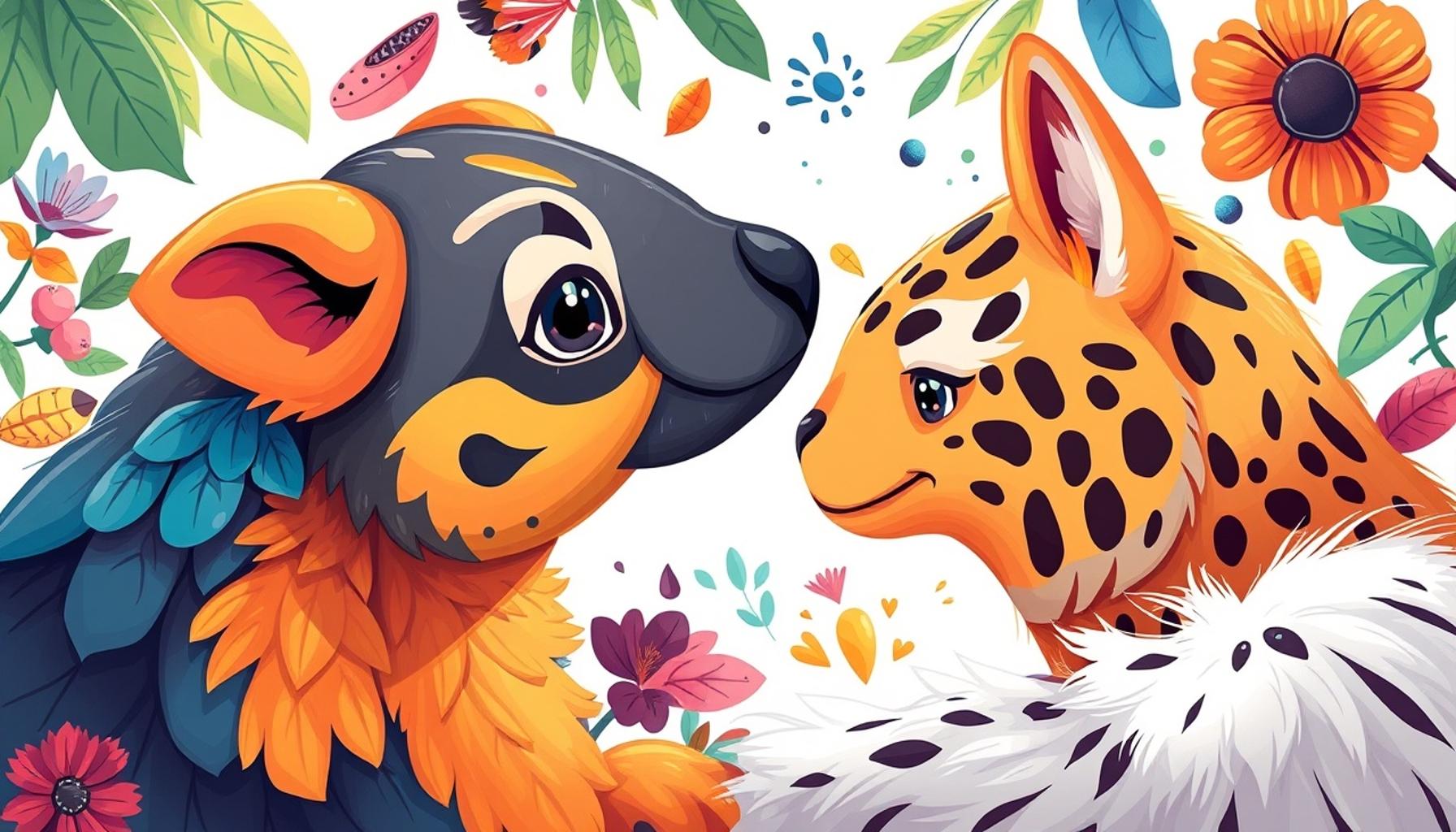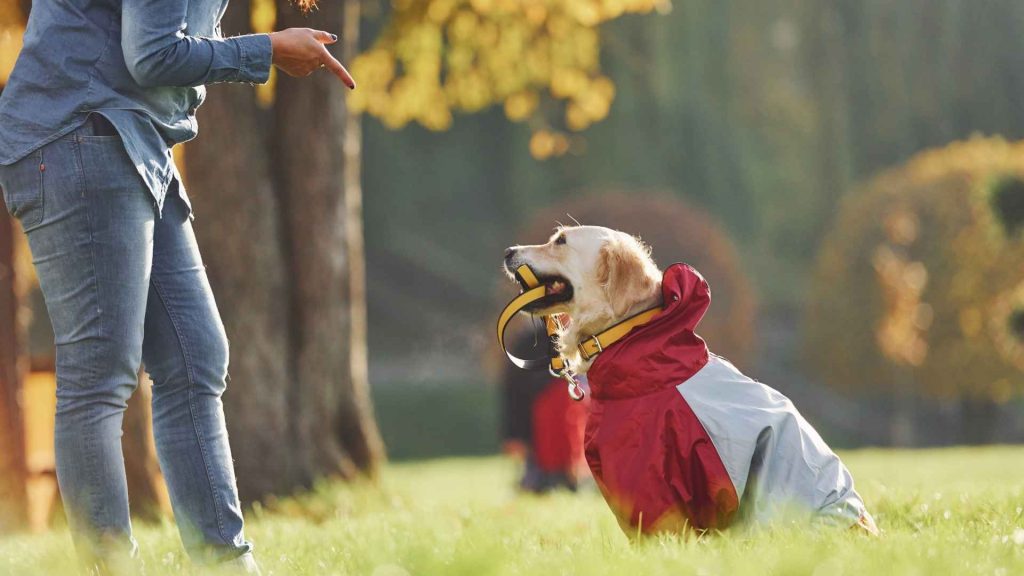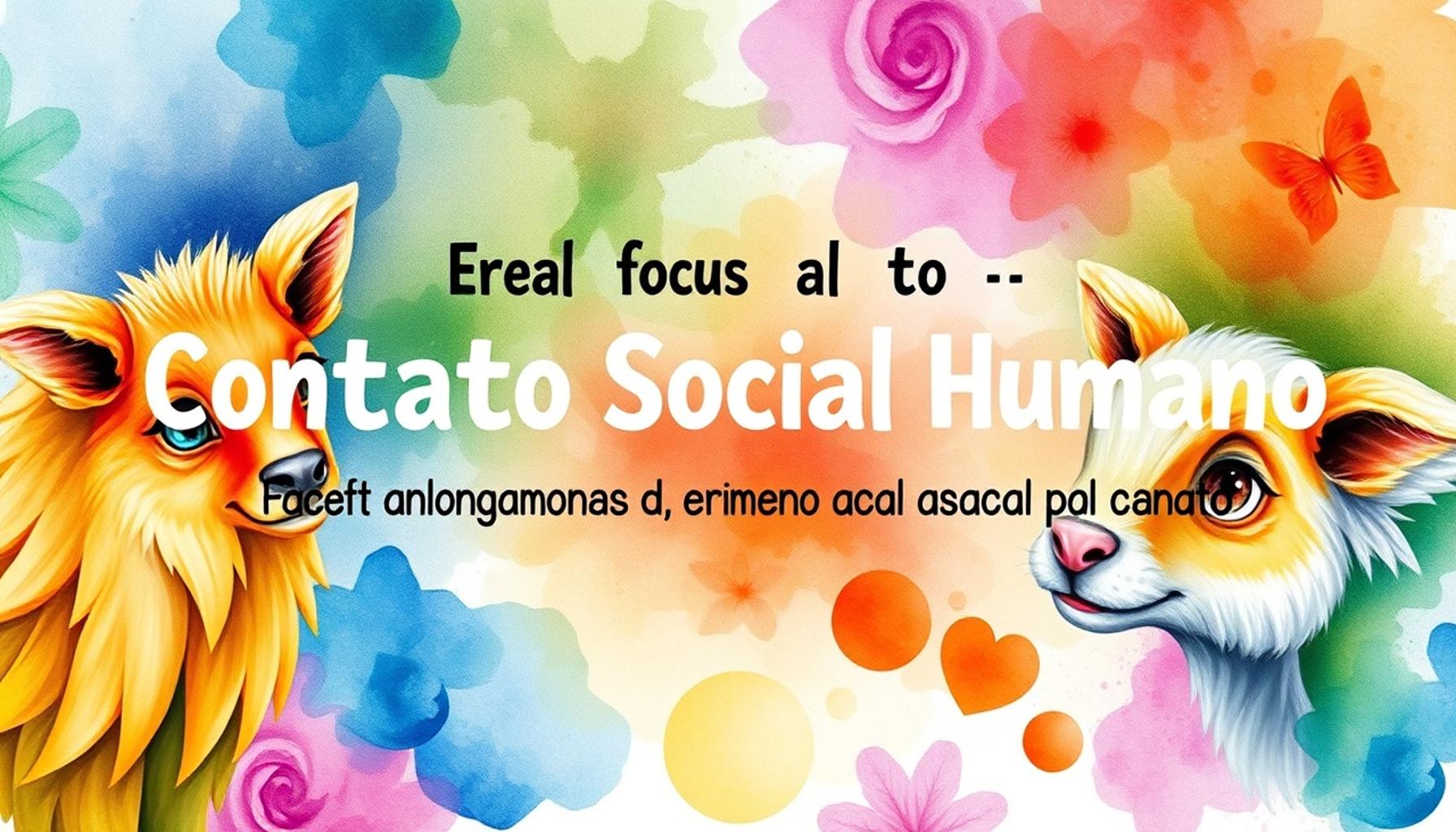Understanding Nonverbal Communication Between Pets and Their Owners

Understanding Your Pet’s Nonverbal Communication
When you walk through your front door, have you ever noticed your dog’s joyful tail wagging like a flag of excitement? This behavior is one of many forms of nonverbal communication that pets use to express themselves, showcasing their feelings and moods. Similarly, when a cat winds around your legs before settling beside you, it is their way of saying, “I trust you” or “I want your warmth.” These gestures highlight the profound bond between pets and their humans, illuminating the silent languages we share.
By paying attention to these communication cues, pet owners can deepen their understanding of their animals’ emotional states, leading to a more fulfilling relationship. Consider the following aspects of nonverbal communication:
- Body Language: The way your pet positions itself is key to decoding its feelings. A dog standing tall with ears perked exhibits confidence and happiness, while a cat with flattened ears and a swishing tail may signal irritation or fear.
- Vocalizations: While often overlooked as mere noise, your pet’s sounds convey significant messages. A dog barking excitedly at approaching guests indicates happiness, while a low growl could suggest discomfort or aggression. In cats, a soft purr usually signals contentment, whereas a hiss can indicate a warning.
- Facial Expressions: Just like humans, pets express a wide range of emotions through facial cues. Observing your dog’s relaxed body and soft eyes can indicate they are in a friendly mood, while wide-open eyes with bared teeth may indicate fear or aggression.
In Nigeria, where the love for pets is blossoming across urban and rural areas, understanding these signals is increasingly important. For instance, when a dog barks happily while playing in the streets, it may be inviting others to join, a lively reminder of community and interaction. Similarly, a cat nestled in its owner’s lap on a cool evening signifies comfort and close companionship. These interactions are not just quaint; they play a pivotal role in establishing a nurturing environment for your pets.
As we further explore the layers of nonverbal interaction that color your daily life with pets, you’ll gain valuable insights. Harnessing this understanding can significantly elevate your approach to pet care and companionship. Imagine being able to anticipate your dog’s needs based on a simple tail wag, or knowing when your cat seeks solitude instead of affection. Such insights can lead to a happier, healthier life for both you and your furry friend.
As the journey of pet ownership continues to evolve in Nigerian households, developing a keen awareness of your animal’s nonverbal signals can transform daily interactions into deeper connections. So, the next time you find yourself in the company of your beloved pet, take a moment to observe and engage in this silent conversation. Who knows what you might discover?

CHECK OUT: Click here to explore more
Decoding Your Pet’s Silent Signals
To truly grasp the nonverbal communication between pets and their owners, one must first recognize the subtle cues that convey emotion and intention. Observing your pet in various situations can unveil a wealth of information regarding their feelings. For instance, a dog that rolls onto its back with its belly exposed is not just being playful; it is showcasing not only trust but also inviting affection. Conversely, if the same dog growls while a stranger approaches, it is issuing a clear warning: this is a boundary that should not be crossed.
Understanding these behavioral signals can significantly enhance the bond between you and your pet. Instead of viewing your animal as merely a companion, you can start to see them as a communicator with their own unique expressions of love, fear, and happiness. Consider the following key aspects of nonverbal communication:
- Tail Position: For dogs, the tail is often an emotional barometer. A wagging tail at mid-height generally shows friendliness, while a low, tucked tail often indicates fear or submission. In contrast, a cat holding its tail high signifies confidence and contentment, while an upright tail with a curved tip indicates a welcoming demeanor.
- Eye Contact: Dogs and cats convey messages through their eyes as well. Direct eye contact can be perceived as confrontational in canine language, while a slow blink from a cat signifies comfort and trust. In many Nigerian households, where pets are considered part of the family, understanding these signals can lead to more relaxed interactions.
- Ears and Whiskers: The position of a pet’s ears and whiskers can provide further insight. For dogs, erect ears can mean alertness and excitement, while flattened ears denote fear or aggression. In cats, whiskers pointing forward signal curiosity and engagement, while whiskers pulled back can indicate anxiety or irritation.
Within the rich tapestry of Nigerian culture, pets fulfill a multitude of roles — from loyal protectors to cherished companions. Understanding the nonverbal communication they exhibit can foster a deeper connection. For example, the way a dog interacts with children in a household can reflect not just instinctual protection but also trust in the family dynamic. Simultaneously, a cat seeking to perch atop a family member’s shoulder is an act of affection that should be esteemed and reciprocated.
As you delve deeper into this fascinating language of nonverbal cues, you will discover a new level of understanding and respect for your pet’s emotions and needs. This connection can transform a simple day-to-day interaction into a shared experience filled with empathy and joy. Recognizing when your dog needs a moment of quiet or understanding when your cat craves attention can profoundly impact your relationship, yielding a more harmonious living environment.
Ultimately, developing an awareness of these nonverbal forms of communication enriches the pet-owning experience and opens doors to nurturing companionships that transcend spoken words. Keep an eye out for these unique signals; the journey into your pet’s world of silent communication is waiting to unfold!
Understanding Nonverbal Communication Between Pets and Their Owners
Nonverbal communication is a crucial aspect of the relationship between pets and their owners, guiding interactions and enhancing bonds. Understanding the body language of pets can lead to improved care and deeper emotional connections. Observing a pet’s posture, ear positioning, tail movement, and even facial expressions can reveal crucial information about their feelings and intentions. For example, a dog wagging its tail is often seen as happy, but the position and speed of the wag can indicate different emotions, such as excitement or anxiety. Similarly, a cat’s slow blinks can express affection and trust.
Moreover, nonverbal cues can be a powerful indicator of a pet’s health and well-being. An owner who is attuned to their pet’s subtle changes in behavior can detect distress or illness early on, allowing for prompt veterinary care. This proactive approach can lead to better health outcomes and a stronger bond between pet and owner.
Furthermore, owners can utilize their own nonverbal signals to communicate effectively with their pets. Gestures, vocal tones, and even a calm demeanor can influence how a pet perceives and responds to interactions. Engaging in low-stress environments during training or play can foster a sense of safety for pets, encouraging them to communicate their needs more openly.
| Category 1 | Category 2 |
|---|---|
| Understanding Body Language | Recognition of emotions through physical cues. |
| Enhanced Communication | Improves pet-owner relationships and responsiveness. |
| Health Indicators | Identification of behavioral changes signaling health issues. |
| Building Trust | Fostering a more secure attachment between pets and owners. |
In essence, understanding nonverbal cues allows pet owners to respond dynamically to their pet’s needs and feelings, enriching the human-animal bond. By becoming more attuned to their furry companions, owners can cultivate a relationship that is not only based on affection but also on a profound understanding of one another.
ADDITIONAL INSIGHTS: Expand your understanding here
Interpreting Emotional States Through Body Language
Beyond mere observations, understanding your pet’s emotional states can be pivotal in fostering a family-like bond. Various body language cues serve as indicators of not just feelings, but also their specific needs at any given moment. In Nigeria, where diverse climates can significantly influence pet behavior, recognizing these cues becomes even more essential.
For instance, if your dog starts panting heavily and pacing around the house during the hot afternoons in Lagos, it may be an expression of discomfort due to heat or restlessness. Conversely, if your feline friend sprawls out in the sun, it isn’t merely basking; the cat is also communicating its state of relaxation and satisfaction with the environment. Understanding these subtle signals can help you make informed choices about how to ensure your pets are comfortable, whether it’s providing shade, fresh water, or simply a cool place to rest.
Recognizing signs of stress or discomfort is also critical. For example, if your dog begins to corner its eyes or displays a slight trembling of the ears, these may be indications of anxiety or fear. Similarly, cats tend to react to stress differently; if a cat’s body appears low to the ground with its tail twitching, it may be a sign of agitation or a readiness to flee. Both instances necessitate a nuanced understanding of the environment, whether it’s adjusting to the bustling city life or the sudden appearance of a stranger.
Facial Expressions and Human Interaction
Facial expressions can also play an integral role in nonverbal communication. Dogs, for example, are known for their expressive faces. When a dog tilts its head while looking at you, it can indicate curiosity and attentiveness. In vibrant Nigerian households filled with children and energetic interactions, understanding these expressions allows you to engage more effectively, promoting a sense of inclusion and security for your pet.
Cats, while sometimes seen as aloof, utilize facial cues as well. A slow blink or a gently closed eye can signify trust and affection when directed towards a human, representing a deep bond. Inviting this interaction can create a sense of intimacy and warmth within the home, thereby enriching the pet-owner relationship.
The Culture of Nonverbal Communication
The understanding of nonverbal cues holds significant cultural relevance within Nigeria, where pets are often not just seen as animals but as integral members of the family unit. Community gatherings that include pets can exemplify their social standing, and the way pets communicate within these social structures reflects broader societal dynamics. For example, a well-socialized dog that greets visitors with a wagging tail and a gentle nudge often signals a welcoming environment, fostering a connection not only between pets and their owners but also with outsiders.
- Stress Signals: Be watchful for signs of stress such as lip-licking, yawning, or sudden changes in behavior. These could indicate that your pet is feeling overwhelmed, particularly in busy urban settings.
- Happy Signals: A dog excitedly jumping and spinning when you arrive home is not merely expressing joy, but is also reinforcing the bond that exists between you, celebrating your return.
- Seeking Comfort: When your pet snuggles up to you during a thunderstorm or other stressful events, recognize that they are seeking reassurance. Your presence is a source of comfort in their moment of vulnerability.
By continuing to observe and interpret these nonverbal signals, you further enrich your understanding of your pet’s emotional landscape. Each interaction can transform communication into a deeper relational experience, highlighting the importance of attention and care that goes beyond mere verbal exchanges. Your reliable ally in this journey is keen observation, making your life—and their’s—more harmonious and fulfilling.
ADDITIONAL INSIGHTS: Expand your understanding here
Conclusion: The Silent Language of Love
In the intricate dance of companionship between pets and their owners, understanding nonverbal communication emerges as a cornerstone of a lasting relationship. From recognizing the nuanced body language cues that signify emotional states to interpreting facial expressions that communicate trust and affection, every gesture holds significant meaning. In Nigeria, where social interaction is deeply rooted in community and familial bonds, providing a nurturing environment for pets hinges on our ability to translate these silent signals.
As we navigate the vibrant yet sometimes chaotic landscapes of urban life, being attuned to the emotional needs of our pets—whether they seek comfort during a storm or express joy with a wagging tail—strengthens the bond we share. In every instance of nonverbal communication, be it through an understanding glance from a pet or a gentle nudge when they sense our hesitation, lies an opportunity for deeper connection and expression of love.
Moreover, embracing this skill enriches our households, enhancing the way pets and families coexist and communicate. By cultivating a keen awareness of these signals, we not only improve our pets’ quality of life but also foster a sense of belonging and security within the family unit. The harmonization of these silent interactions transforms ordinary days into extraordinary experiences, leaving pet owners with a profound sense of fulfillment and happiness.
As you reflect on the unspoken language shared with your pet, consider that every moment spent observing and connecting is a step towards a harmonious relationship that transcends words, marking a journey of love, trust, and understanding.


